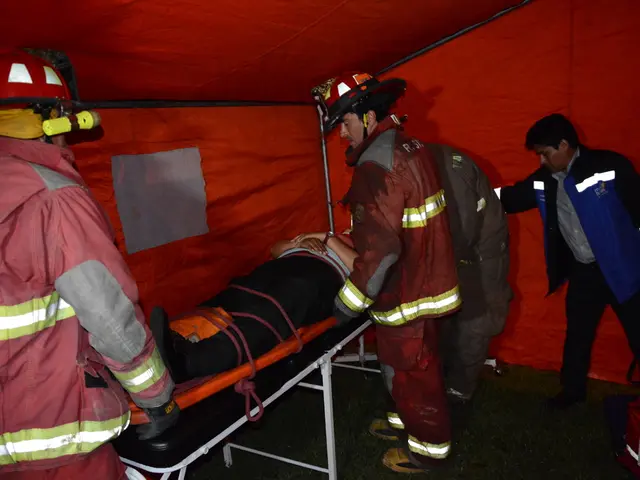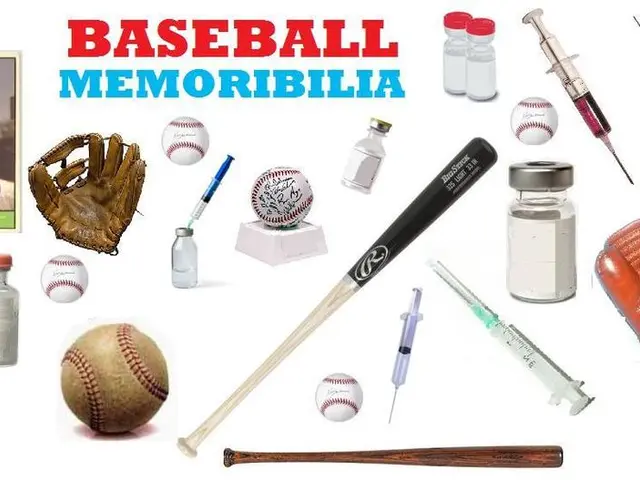Strategies for Addressing and Healing Neck Trauma in Sports Competitors
**Neck ailments are common among athletes, particularly those participating in contact sports or activities involving repetitive movements. These injuries range from minor strains and sprains to more serious issues like herniated discs and whiplash. Understanding how to manage and treat these neck issues is vital for an athlete's overall health and performance.
Common Neck Issues in Athletes
The neck is a complex apparatus comprising bones, muscles, ligaments, and discs. As athletes engage in strenuous activities, they expose their neck to potential harm. Some frequent neck injuries among athletes include:
- Strained cervical muscles: These occur due to sudden movements or excessive force, stretching or tearing the neck muscles.
- Whiplash: This common injury, seen in sports with sudden deceleration or impact, causes the neck to snap forward and backward rapidly.
- Herniated discs: Athletes subjected to repetitive motions or heavy lifting are prone to herniated discs, where the discs between the vertebrae burst or bulge.
- Cervical spine fractures: Although uncommon, severe trauma or high-impact collisions can result in fractures in the neck vertebrae, which necessitate immediate medical attention.
Identifying the Red Flags
Recognizing the warning signs of neck injuries in athletes is essential for prompt and tailored treatment. Some common red flags to keep an eye out for are:
- Neck pain or stiffness
- Pain that travels to the shoulders, arms, or hands
- Headaches
- Numbness or tingling in arms or hands
- Weakness in the arms
- Difficulty moving the neck
If an athlete encounters any of these symptoms, it is crucial to seek medical advice and avoid further physical activity until a proper diagnosis is confirmed.
Managing Neck Issues
Proper management of neck injuries is vital for an athlete's recovery and preventing future damage. Here's an action plan for effectively managing neck injuries in athletes:
- Rest and immobilization: The athlete should refrain from strenuous activities that exacerbate the injury. In severe cases, a neck brace or collar may be necessary.
- Ice therapy: Applying ice to the affected area can help reduce pain and inflammation. Ice should be applied for 15-20 minutes multiple times daily, with a cloth or towel between the ice pack and the skin to prevent ice burn.
- Pain management: Over-the-counter painkillers can provide temporary relief. However, consult a healthcare professional for appropriate pain management strategies.
- Physical therapy: Under the guidance of a physical therapist, athletes can go through specific exercises and stretches to improve neck mobility, strengthen muscles, and promote healing.
- Gradual return to activity: Athletes should progressively reintroduce activity after clearance from a medical professional. The pace of return should be slow and monitored to prevent re-injury.
Treatment Choices
Treatment options vary depending on the severity of the neck injury:
- Chiropractic care: Chiropractic adjustments and manipulations can help realign the spine and alleviate pain in some cases of neck injuries.
- Physical therapy: This plays a critical role in managing and rehabilitating neck injuries in athletes.
- Medication: Prescription medications may be necessary for pain management, reducing inflammation, or relaxing muscles.
- Injections: Steroid injections or nerve blocks can be used for persistent pain that proves resistant to conservative measures.
- Surgery: The last resort for severe conditions like herniated discs or fractures, surgery is typically performed when other treatment options fail.
Consult a sports medicine specialist, orthopedic surgeon, or healthcare professional to determine the most suitable course of action for an athlete's specific neck injury.
Preventing Neck Injuries
Prevention is vital in the case of neck injuries. Here are some tips to reduce the risk:
- Warm-up and cool-down: Always perform proper warm-up and cool-down routines before and after physical activity.
- Strength and conditioning: Perform regular exercises that focus on neck stability and strength.
- Protective gear: Appropriate equipment like helmets or neck collars should be worn during contact sports.
- Maintain good posture: Practice correct posture during sports to avoid excessive neck strain.
- Listen to the body: Ignoring pain or discomfort is never a good idea. Promptly seek medical attention.
By adhering to these preventive measures, athletes can significantly minimize the risk of neck injuries and continue excelling in their chosen sports while avoiding long-term neck problems.
Takeaway
Effective management and treatment of neck injuries in athletes require a holistic approach that addresses both immediate care and long-term recovery, alongside prevention strategies to minimize the risk. With the right strategies, athletes can recover efficiently and safely. Remember, prevention is essential, so paying attention to neck care will help athletes thrive in their sports without facing unnecessary health complications.
- Frequent neck issues among athletes participating in sports with repetitive movements or high impact include strained cervical muscles, whiplash, herniated discs, and cervical spine fractures.
- Proper management of neck injuries in athletes entails rest and immobilization, ice therapy, pain management, physical therapy, a gradual return to activity, and preventive measures like warm-up and cool-down routines, strength and conditioning exercises, wearing protective gear, maintaining good posture, and listening to the body.








